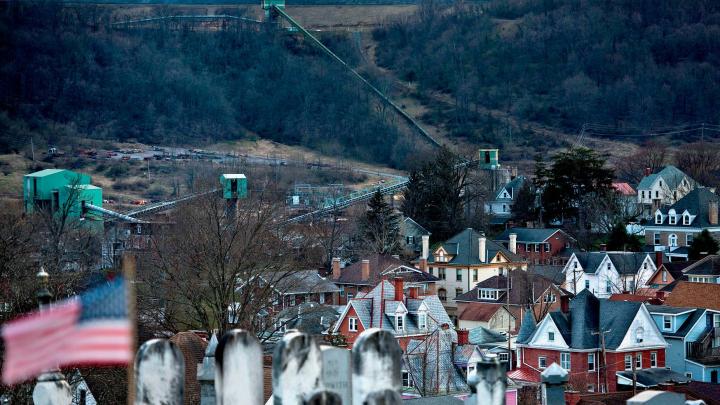Donald J. Trump’s victory in the 2016 presidential election spawned a maelstrom of finger-pointing and soul-searching within the Democratic Party. How could the party of FDR, LBJ, and, for that matter, Bill Clinton, have lost touch so thoroughly with the white working class that had been central to its coalition for years? Which way should the party go in its identity and future strategy? Should it veer left, in the Bernie Sanders direction, or stay centrist? Should it continue to piece together an electoral coalition of racial and ethnic minorities, single women, and coastal elites? Or does the logic of the Electoral College require a cross-racial, geographically diverse coalition of the non-elite centered on economic issues? The analyses and recommendations intended to prevent another 2016 for the Democrats are just beginning.
Pre-election warnings weren’t lacking. A host of books detailed the growing discontents of lower-income white workers. Harvard political scientists Vanessa Williamson and Theda Skocpol wrote of the frustration of Tea Party members in The Tea Party and the Remaking of Republican Conservatism (2012), while Katherine J. Cramer uncovered the resentment of rural voters toward the “liberal elite” in The Politics of Resentment: Rural Consciousness in Wisconsin and the Rise of Scott Walker (2016). J.D. Vance described his own family’s predilections in Hillbilly Elegy (2016) and sociologist Arlie Russell Hochschild reported that right-leaning folks in Louisiana bayou country felt they were Strangers in Their Own Land. Economist Robert J. Gordon ’62 revealed why they might be so upset in The Rise and Fall of American Growth (reviewed in the May-June 2016 issue, page 68).
If Democratic Party elites (and Hillary Clinton’s campaign officials) missed the warning signs, Joan C. Williams, J.D. ’80, of the University of California’s Hastings College of the Law, offers an early post-election analysis in White Working Class. Expanding upon her much-read November 2016 Harvard Business Review article, Williams serves as tour guide and translator in explaining the worldviews, anxieties, and political choices of economically precarious white voters. Although cynicism comes easily about yet another member of the coastal elite class-splaining for the rest of us, the book is full of pithy observations and plausible theories. Her basic message is that white liberal elites and the progressive lawmakers who represent them have abandoned the white working class, scorning their lifestyles and beliefs while failing to offer policy solutions that would truly help them. No surprise then when that group returns the favor by abandoning Democrats in the electoral arena.
Williams defines the working class as Americans with incomes above the bottom one-third and below the top one-fifth ($41,000 to $132,000 in 2015, with median income around $75,000). She also includes an additional 6 percent who have higher incomes but no college degree. We might term such folks the middle class, but since Americans try to elide class differences by calling everyone “middle class,” she settles on calling this middle 53 percent “the working class.” Below the working class on the income spectrum are “the poor” and above are “the professional-managerial elite,” who in addition to having incomes in the top 20 percent also have at least one college graduate per household. This “PME” group has a median income of $173,000.
Williams asserts that the professional-managerial elite have a bad case of “class cluelessness.” We (if you’re reading this review, you’re probably in the PME) think the working class consists of racist, sexist, homophobic, and anti-immigrant “deplorables.” We can’t understand why all those people in flyover country refuse to move where the jobs are. Don’t they understand that manufacturing jobs aren’t coming back? Why won’t they take the pink-collar jobs that are growing? Why do they refuse to get the training they need to better their lot—and why don’t they send their kids to college? Why do they cling to their guns and their religion? Above all, why do such people vote Republican and vote Trump? Don’t they want health insurance and a higher minimum wage? And how dare they criticize the poor when so many of them are on government disability or unemployment.
Williams spends most of this short, trenchant book explaining the worldview of the working class: why they believe and behave as they do. And her message for the professional-managerial class is blunt: just as elites ascribe structural reasons for poverty, so too should they recognize the structural factors behind the attitudes and behaviors of the working class.
She walks through the sources of financial insecurity and hopelessness among that group. Jobs have vanished, job retraining is useless. Higher education is no sure step up for their children. Many working-class kids live in “education deserts,” miles from any college or university. The return on education can be low, and the resultant debt cripplingly high. The workplace has vastly different meanings as well: as Williams sardonically notes, for elites, “‘disruption’ means founding a successful start-up. Disruption, in working-class jobs, just gets you fired.”
These structural constraints help explain worldviews and lifestyles. Above all, the working class wants to work. Sure, they may be on unemployment and disability now, but they qualify for those programs only because they were workers in the past—unlike the poor, who violate cherished norms of hard work and self-discipline. They resent Democrats for providing social assistance to these “shiftless” poor—handouts that the white working class wouldn’t stoop to accept (and for which their incomes are probably too high to qualify anyway, despite their financial insecurity). And they resent progressives for mandating sympathy for the poor, for women, and for minorities, while heaping scorn on them.
Elites may scoff at religion, but for the working class it is an institution far more significant than elites’ ludicrous “mindfulness” and pursuit of self-actualization. It provides crucial structure, hopefulness, status, and a financial safety net in times of need, when government often falls short. In a world of structural inequality and lack of opportunity, the family, too, is paramount. Lacking financial resources, members of the working class rely on friends and relatives to provide the childcare, elder care, and help with home and car repairs that elites simply purchase. Moving would mean the loss of these irreplaceable networks.
What are the political implications of these patterns of belief? Here, too, Williams is good at explaining what seem to progressives and elites perverse patterns: the working class’s embrace of tax cuts for the rich, resentment of unions, and support for Republican candidates. Tax cuts for the rich could create jobs; less government revenue could result in benefit cuts for the resented poor. Plus, the working class doesn’t resent the rich, with whom they have no contact, but rather the professional-managerial elite at whose hands they suffer daily affronts (“the doctor who unthinkingly patronizes the medical technician, the harried office worker who treats the security guard as invisible”). Unions help only a few people, and public unions representing teachers and bureaucrats take money from working people’s pockets. Support for Republican candidates whose policies reflect these attitudes is perfectly logical, as is rejection of Democrats’ policies, which may help the poor, but not the working class (a $15 minimum wage does little when a $30 wage is what’s needed for a modest living standard in most parts of the country).
Williams’s analysis is most original when skewering elites’ assumptions. As she notes, elites who look down their noses at working-class folkways do so from the perspective of their own folkways. Elites may think they hold more liberal racial attitudes, but in fact we’re “all a little bit racist,” according to the musical Avenue Q and the inexorable results of the Implicit Association Test. Elites may think they hold superior gender attitudes, and deem working-class men sexist because they prefer their wives to stay at home when they can. But how about those elite male M.B.A.s who, surveys show, expect their future wives to stay at home, too? Turns out the average working-class father spends more time with his children than the average elite man. Elites may think moving (away from friends and family) for a higher-status job is the ultimate professional achievement. But the working class sees work devotion as narcissism, and change as loss. Elite women may look down on working-class housewives, but job-applicant studies show that non-elite women get more callbacks than elite women, who are perceived as flight risks who will leave their own jobs, once they have children, to engage in the intensive mothering and “concerted cultivation” now expected in affluent circles.
If the book is strong, albeit rather sweeping, on diagnosis, it is weaker on solutions. Williams calls for better civic education, which many have fruitlessly called for in the past. Perhaps her ideas about videos in which citizens extol what government has done for them could help. She’s on firmer ground in calling for elites to realize the folly of their, well, elitist ways and to offer policies that would actually help the working class, not just the poor (such as effective industrial policy and job credentialing). She also advocates new coalitions embracing common interests, observing that immigrants and the white working class share the same values of hard work and family, that progressives and the working class share an interest in marshaling government to fight against overreaching corporate interests.
In sum, Williams offers an effective tour of working-class resentments arising from structural forces and the snobbery of the elite. She draws widely on research in sociology and psychology (relegated to footnotes to maintain readability) and throughout shares amusingly telling examples of class cluelessness that she received in reaction to her HBR piece. The account might have been further enriched with the relevant political-science research as well (such as the extensive literature on the “hidden welfare state” of social policies implemented through the tax code, such as the home-mortgage interest deduction, that are costly, invisible, and disproportionately benefit the affluent). But in the end, Williams offers a concise, witty, and thought-provoking account of the powerful resentments underlying contemporary American politics.








